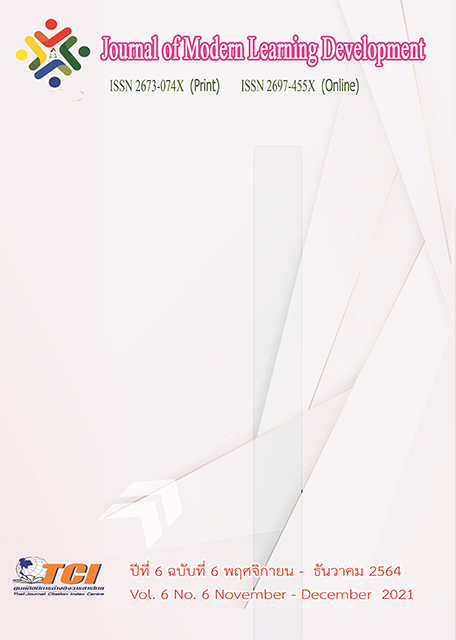The Development of Design Through a Learning Management Course Based on Feng Shui Practice
Main Article Content
Abstract
This research there objectives were to 1) study the learning management needs of designers. with a course of learning management according to the science of feng shui 2) a course of learning management according to the science of feng shui for designers and 3) evaluate the designer's logo design according to the science of Feng Shui. The group of key informants consisted of four experts in feng shui design, derived from specific selections. The sample group consisted of 45 independent designers. The research tools used were 1) an in-depth interview approach, 2) a Feng Shui-based learning management course, 3) a post-training cognitive assessment form, and 4) a logo design assessment form. The statistics used in the research were percentage, mean and standard deviation.
The results of the research revealed that 1) the learning management needs of designers with a curriculum of learning management according to the science of Feng Shui; Factors in the curriculum of learning management according to the science of feng shui and factors The designer's design results are in accordance with the designer's needs in all three aspects. 2) The results of the examination of the curriculum of learning management according to the science of Feng Shui for designers consist of determining the purpose of the course. Choosing a Training Experience and training evaluation According to the opinions of experts, it was found that the curriculum was appropriate at a high level (= 4.41, S.D. = 0.47) 3) Designers who participated in Feng Shui learning management courses. There was a cognitive assessment, indicating that the participants in Feng Shui design training had increased development and skills and found that they were at a high level (= 4.46, SD = 0.49. ) and 4) 45 designers passed the assessment criteria, totaling 41 people, representing 74.55% of the specified assessment criteria, not less than 70%.
Article Details
References
ชัยนันท์ พรหมเพ็ญ. (2557). ฮวงจุ้ยเพื่อที่อยู่อาศัย. (พิมพ์ครั้งที่ 3). มหาสารคาม: สำนักพิมพ์มหาวิทยาลัยมหาสารคาม.
บุญใจ ศรีสถิตย์นรากูร. (2553). ระเบียบวิธีการวิจัยทางพยาบาลศาสตร์. กรุงเทพมหานคร: ยูแอนด์ไอ อินเตอร์มีเดีย.
ภัทรา ธีรกุล. (2559). ศาสตร์ฮวงจุ้ยกับการจัดการชุดองค์ความรู้เพื่อการสื่อสารในสื่อใหม่ (เว็บไซต์) ของธนาคารกสิกรไทย. ศิลปศาสตรมหาบัณฑิต (นิเทศศาสตร์และนวัตกรรม) คณะนิเทศศาสตร์และนวัตกรรมการจัดการ สถาบันบัณฑิตพัฒนบริหารศาสตร์.
เสริมจิตวิทยาการออกแบบ ผสานศาสตร์ฮวงจุ้ย. (2562). เสริมจิตวิทยาการออกแบบผสานศาสตร์ฮวงจุ้ย. ออนไลน์. สืบค้นเมื่อ 17 เมษายน 2563. แหล่งที่มา: https://www.ryt9.com
อาวิน อินทรังษี. (2553). สี กับการออกแบบอัตลักษณ์. วารสารวิชาการศิลปะและการออกแบบ มหาวิทยาลัยศิลปากร. 3 (3), 47-58.
โอภาส เกาไสยาภรณ์. (2560). การออกแบบการเรียนการสอนอีเลิร์นนิ่ง. สงขลา: คณะศึกษาศาสตร์มหาวิทยาลัยสงขลานครินทร์.
ฮวงจุ้ยกับงานออกแบบ. (2564). ฮวงจุ้ยกับงานออกแบบ. ออนไลน์. สืบค้นเมื่อ 17 เมษายน 2563. แหล่งที่มา: https://cadsondemak.com
Tyler Ralph W. (1949). Basic Principia of Curriculum and Instruction. Chicago: the University of Chicago press.


